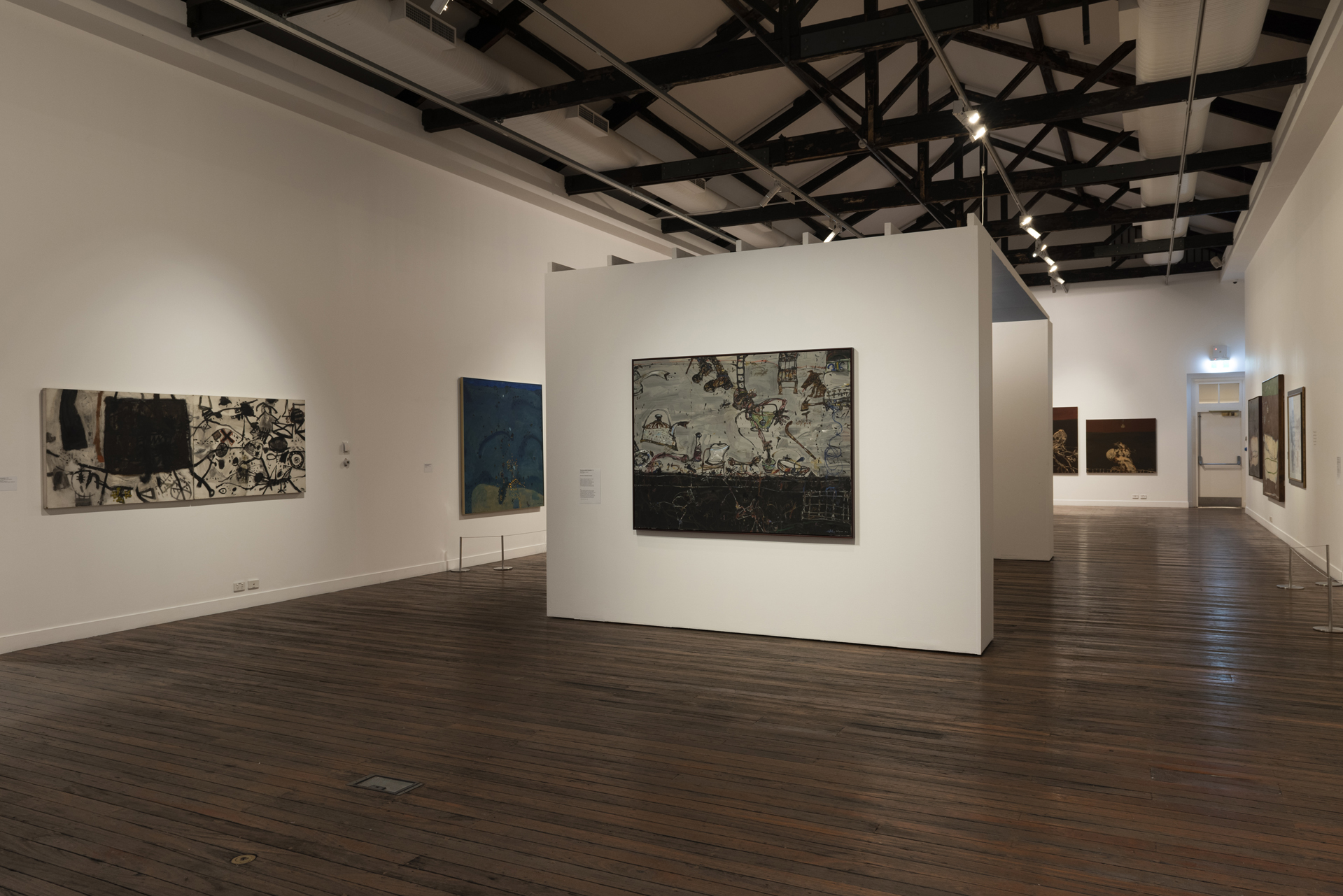John Olsen: Goya’s Dog

The National Art School is proud to present John Olsen: Goya’s Dog, a powerful exploration of an extraordinary Australian artist – from his creative awakening in Spain, through the darkness that threatened to overwhelm him at times, and his ability to reach for the light, pursuing a long and acclaimed career.
John Olsen is one of the National Art School’s most renowned graduates, a NAS Fellow, AO and OBE. Goya’s Dog features over 50 major works, sketchbooks and drawings, many not seen in public for generations.
The exhibition begins in Spain during the mid-1950s when the young artist became entranced and inspired by Spanish culture – art, poetry and music – which drew him to explore a darker, more vulnerable side of his personality and experience. Another visit to Spain in the mid-1960s transformed his palette, which became more dynamic and bold.
“It was a remarkable experience because Spain was completely isolated from the modishness of the 20th century, it was still the essential heart of Europe. And then as I began to study, I became aware that even though Spain is a bright and sunny country, that its principle painting lay on the basis of tone – Velazquez, Goya, Murrillo – and somehow those earthy tones reverberated the soul of Spain.
“It was very profound … rather than thinking outwards, it made you think inwards. Still in Australia today, they like the sunny side of the world, whereas the Spanish like the shadow side of the world. I found that very intriguing.” John Olsen, February 2021
The exhibition also features Olsen’s work from the 1970s, ’80s and ’90s, a period when his vital urban Australian ‘larrikin’ voice emerged. The Olsen landscape became like a theatre or stage, where human drama takes place. It is vivacious, teeming with metaphysical life; in parallel with and embracing real life.
Known for the irrepressible vitality in his work and his buoyant personality, Olsen is a visual poet with a deep love of poetry underpinning his work. Yet he has also confronted darkness in his life, reflected in works such as Donde voy? Self-portrait in moments of doubt (1989). This powerfully introspective painting fits within a venerable history of western art, one which looks mortality in the face.
“I’m 93, and I’m more entranced with the dark side. Not in a mournful sense, but in a sense of enquiry.” John Olsen
Olsen has followed his lifelong urge to set sail into the unknown, delving into the landscape that takes on the form of a living being, full of emotions, foibles and beauty. Through the storms, struggles and soul-searching, he lands on moments of enlightenment, where he is able to capture the energy and elemental life forces of nature, and what it is to be human within this world.
“What I’m talking about is the artist as hunter gatherer. Being daring, and not frightened of the outcome. You’re a journeyman, in the real sense. It’s not the question of failure, it’s the question of understanding and feeling, where you’re able to inhabit your interior world.” John Olsen
EXHIBITION DATES: Friday 29 October – Saturday 27 November 2021
EXHIBITION LOCATION: NAS Gallery
OPENING HOURS: Monday–Saturday, 11am–5pm
CURATOR: Steven Alderton based on a concept by William Wright AM

Explore the exhibition
Images: John Olsen: Goya’s Dog installation view, 2021. Photos: Peter Morgan
Hear from the artist
Education Resources
The John Olsen: Goya’s Dog resource been written in line with the Years 7–10 Visual arts Syllabus and the Higher School Certificate Visual arts Syllabus, as a guide to exploring the exhibition or as a pre/post-visit resource. Tertiary students and the general public may also find the resource useful.
Teachers will be able to use this resource in conjunction with the works in the exhibition to engage in a critical and historical study of the art world and to investigate artists, artworks, worlds, and audiences from a range of cultural, political, historical and social perspectives and use these to inform their own artmaking practices.
Use the exhibition walkthrough video (top of page) to explore the artworks.









































